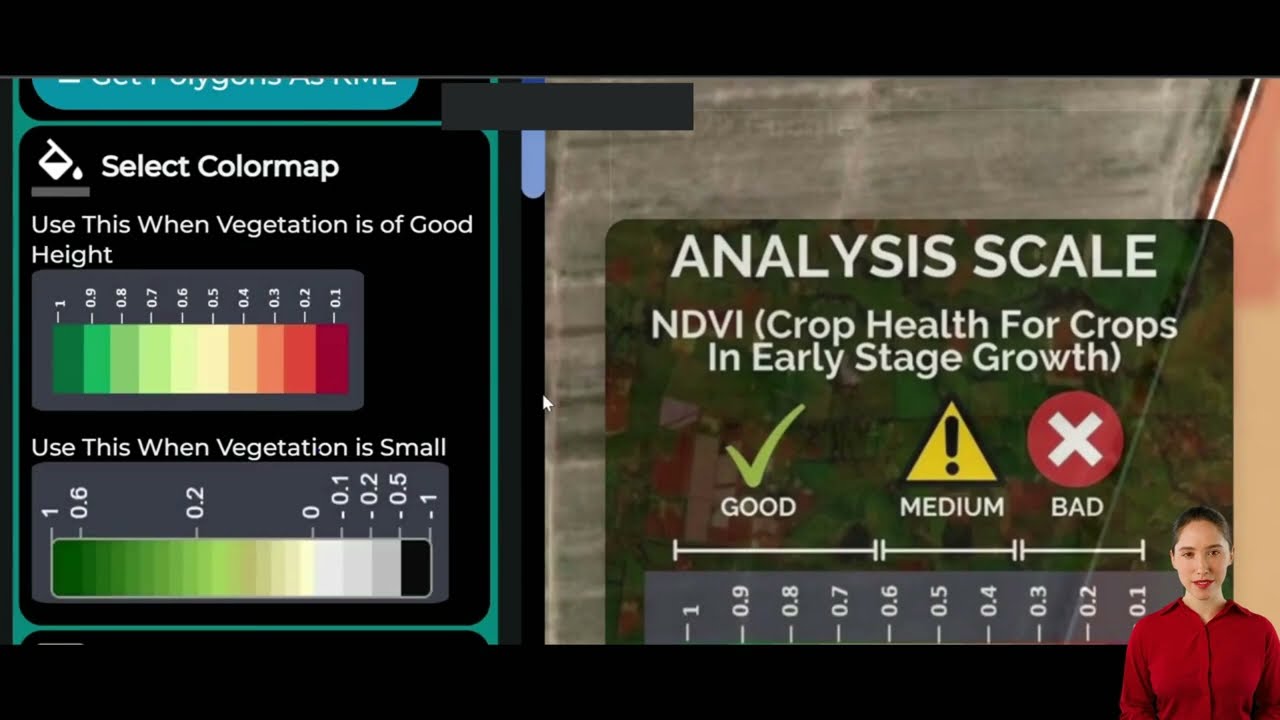“Utah’s snowpack has declined by over 20% since 1950, directly reducing available irrigation water for agriculture.”
Utah Snowpack: 7 Key Impacts on Agriculture & Forests
Utah’s unique geography makes it heavily reliant on winter snowpack—a natural reservoir vital for our agriculture, farming, and forestry sectors. Snow that accumulates in the mountains during colder months slowly melts in the spring, releasing the water we depend on for irrigation, livestock, and sustaining vast forest ecosystems. But, in recent years, challenges have become urgent.
Scientific studies document that since the late 1970s and even more starkly since 1950, Utah snowpack has steadily declined by 16–20%. The result is a ripple effect, impacting everything from crop yields and irrigation cycles to the risk of wildfires and the sustainability of our forests. Today, we’re investigating the seven most crucial ways declining snowpack is shaping the future of Utah’s agriculture and forests—along with the cutting-edge tools and drought mitigation strategies empowering us to respond.
Try Farmonaut’s agricultural monitoring & management app for real-time insights on your crop health, irrigation, and forest conditions!
Why Utah Snowpack Matters for Agriculture & Forests
Utah’s high-mountain snowpack isn’t just picturesque—it’s a critical resource reservoir feeding the lifeblood of agriculture and forestry throughout the state. The snowpack stores winter precipitation in the form of snow, slowly releasing supplies of clean meltwater in spring and summer when fields, livestock, and forests need it most.
- Snowmelt accounts for up to 80% of Utah’s annual water supply—directly affecting irrigation, crop health, soil moisture, and feeding municipal reservoirs.
- It stabilizes river and stream flows—supporting both agriculture and vital forest ecosystems by preventing soil erosion, sustaining biodiversity, and reducing drought impact.
- Snow-insulated soils prevent deep winter freezing, protecting crops and young saplings while preserving soil structure and nutrients.
Without steady, timely snowmelt, many Utah communities face water scarcity in agriculture, unpredictable planting/harvesting, heightened wildfire risk, and declining forest health.
Focus Keyword Presence: “Utah snowpack” appears prominently in this section, reinforcing its importance for SEO and readers alike.
What’s Driving Utah Snowpack Decline?
Multiple factors are shrinking the Utah snowpack every winter. The chief culprits are:
- Rising Temperatures: Climate data shows Utah has warmed significantly over the past 50 years, causing a higher percentage of winter precipitation to fall as rain, not snow. This shortens the snow season and accelerates melting.
- Altered Precipitation Patterns: Changes to atmospheric circulation and storm tracks mean less predictable snowfall. Some years bring drought, others bring rain instead of snow—hurting our “natural reservoir” capacity.
- Earlier Spring Melts: Snow is disappearing weeks earlier each season, disrupting the delicate timing needed for efficient water release and crop irrigation.
The effects of reduced precipitation are being felt by all of us—farmers, forest managers, urban communities, and natural ecosystems alike. As these trends continue, water scarcity intensifies, and long-term sustainability challenges multiply.
Utah Snowpack: 7 Key Impacts on Agriculture & Forestry
Let’s explore the major impacts of declining Utah snowpack on our agriculture and forest sectors, and what it means for local communities, food security, the environment, and farming livelihoods.
“Drought from reduced snowpack can decrease Utah crop yields by up to 30%, threatening food security and local economies.”
1. Water Scarcity in Agriculture
Water scarcity is perhaps the most direct impact of a diminishing Utah snowpack. As snowpack shrinks, so do snowmelt flows that supply irrigation systems, filling reservoirs and sustaining farms through hot, dry months.
- Spring runoff now peaks weeks earlier, sometimes missing the critical periods when crops are planted and fed.
- Irrigation challenges in Utah escalate as canals, reservoirs, and groundwater sources struggle to keep up with crop water demand.
- Communities must rely on expensive reservoir storage or pump groundwater, straining both budgets and aquifers.
Example: In dry years, parts of Utah have seen irrigation allocations slashed, forcing some farmers to let fields go fallow or invest in more efficient but costly irrigation systems.
Want to optimize water resource management? Discover Farmonaut’s Large-Scale Farm Management platform for real-time water status insights and resource allocation on extensive farmland.
2. Crop Yields and Drought
The relationship between snowpack and crop yields is tightly linked. Late or low-volume snowmelt causes soil moisture deficits, limiting germination, root establishment, and plant growth. Drought from a shrinking snowpack can cut regional yields by up to 30%.
- Crops affected: Alfalfa, corn, small grains, and many specialty crops all suffer under shorter, drier growing seasons.
- Cultivation cycles: Unpredictable snowmelt disrupts optimal planting and harvesting schedules, making it difficult for farmers to plan effectively.
- Economic impacts: Lower yields tighten margins and increase the risk of financial hardship for agricultural producers.
Facing crop yields and drought challenges? Farmonaut’s Crop Plantation & Forest Advisory system provides AI-driven recommendations for irrigation timing and stress detection.
3. Irrigation Challenges in Utah
Reliable irrigation enables Utah’s farming sector to thrive in semi-arid conditions. However, as the impact of snowmelt on farming diminishes:
- Pumping costs soar as surface water becomes scarce and groundwater use intensifies.
- Deficit irrigation—providing less water than optimal—becomes commonplace, reducing productivity over time.
- Irrigation systems (canals, pivot sprinklers, drip lines) need smarter management to make every drop count.
Farmonaut’s mobile and web-based platform delivers real-time crop health, NDVI, and soil moisture analytics from satellite data—guiding efficient irrigation even during shortages.
Tip: Developers and agribusinesses can tap the Farmonaut API for irrigation and weather insights, or review the API Developer Docs.
4. Livestock Production and Feed Shortages
Livestock health is directly affected by water shortages and diminished forage. When snowpack runoff declines:
- Pond and creek levels drop, reducing water available for cattle and sheep operations.
- Alfalfa and native grasses—the primary feed sources—experience stunted growth, triggering expensive supplemental feeding.
- Stress in herds increases risk of health issues, lower weights, and reduced birth rates.
Farmonaut’s fleet management solutions allow large-scale livestock enterprises to monitor rangeland conditions, coordinate water/fodder deliveries, and optimize operational decisions statewide.
5. Forest Health and Wildfire Risk in Utah
Shrinking snowpack leaves Utah’s forests dry and vulnerable—paving the way for catastrophic wildfires and degraded ecosystems.
- Longer fire seasons: Less snow means soils dry out faster, lengthening the wildfire risk in Utah and threatening both woodland and grazing lands.
- Declining tree vigor: Drought lowers tree resistance to pests and diseases, leading to large-scale die-offs and more fuel for fires.
- Sensitive species: High-elevation forests (e.g., aspen, pine, spruce) are particularly at risk, disrupting wildlife habitats and biodiversity.
Forest management strategies—such as thinning, controlled burns, and adaptive replanting—are essential for reducing wildfire risk and maintaining ecosystem services.
Interested in remote forest health monitoring? Explore Farmonaut’s carbon footprinting tool for tracking sustainable land management and emissions.
6. Pest & Disease Pressure in Forests and Crops
Drought-stressed plants in both fields and forests attract an array of pests and diseases. Weak growth and open canopy conditions:
- Make trees more likely to succumb to bark beetle infestations or fungal pathogens.
- Reduce crop resistance to insects, weeds, and soil-borne diseases.
- Can lead to rapid, landscape-wide loss of both crops and native species.
Monitoring for pest and disease outbreaks is easier with Farmonaut’s traceability features, which also assure transparent supply chain data for buyers and regulators.
7. Soil Degradation, Loss of Biodiversity & Ecosystem Disruption
Fewer snowmelt-fed rivers and moist forest floors inevitably harm Utah’s soil and the intricate web of life they sustain.
- Soil degradation: Without sufficient water, soils become compacted, lose organic matter, and are easily eroded during rain events.
- Biodiversity loss: Changing forest structure and vegetative cover undermine animal habitats, reduce pollinators, and trigger cascading ecosystem disruption.
- Invasive species: Weeds and non-native grasses opportunistically expand when stressed native flora die back.
Strong ecosystem management—informed by frequent monitoring—is key to preserving both agricultural and forest landscapes despite ongoing challenges.
Farmonaut’s satellite-verified crop loan and insurance service supports financial resilience for farmers facing uncertainty due to drought or environmental stress.
Adaptive Strategies & Drought Mitigation in Utah Agriculture and Forestry
Climate adaptation in Utah isn’t theoretical—it’s the difference between thriving and withering for both farms and forests. Here’s how our industries are fighting back:
Water Conservation and Efficient Irrigation
- Precision irrigation systems: Drip and moisture-sensing technologies make every drop count. Farmonaut’s field analytics let agriculture operations track soil moisture and optimize irrigation remotely.
- Water-sharing agreements: Community management of limited supplies reduces waste and conflict.
- Reservoir management: Smart operation of water storage extends the usefulness of each year’s snowmelt.
Crop Diversification & Drought-Resistant Varieties
- Diversification: Growing a mix of drought-tolerant and irrigated crops spreads risk and improves food security for local economies.
- Drought-resistant seeds: Breeding and deploying hardier varieties improves yields even under stress.
Receive data-driven planting advice? Farmonaut’s AI-based crop and forest advisory features suggest crop variants and planting dates that best suit projected soil moisture and climate trends.
Forest Management Strategies to Reduce Wildfire and Drought Impact
- Thinning: Removing excess undergrowth and weak trees lowers risk of severe wildfires.
- Controlled burns: Prescribed fire restores soil health, encourages native grasses, and interrupts invasive species cycles.
- Adaptive planting: Choosing drought- and pest-resistant trees helps sustain Utah’s forest cover for generations.
Policy, Education & Technology Innovation
- Policy Initiatives: Proactive state and federal support (grants, insurance, research) protects our agriculture and forestry sectors from extreme weather volatility.
- Tech adoption: Apps like Farmonaut make satellite-driven precision farming, field alerts, and blockchain-based traceability accessible and affordable for all Utah farmers.
Mitigation and conservation are not just buzzwords—they’re essential to our future. Farmonaut is dedicated to making advanced monitoring and decision tools available via web, Android, and iOS—empowering Utah’s agricultural community with real-time, actionable insights.
Impacts of Utah Snowpack Decline on Agriculture and Forestry
| Key Impact Areas | Estimated Change with Declining Snowpack | Agricultural Consequence | Forestry Consequence | Potential Adaptive Measures |
|---|---|---|---|---|
| Water Availability | 15–20% decrease in available spring/summer runoff | Insufficient irrigation for key crops and livestock | Reduced stream flows limit forest hydration | Efficient irrigation, water conservation, smart reservoirs |
| Drought Severity | Increased drought frequency & intensity | Yield losses up to 30%; fallow land expands | Tree mortality & stress increase; weakened ecosystem resilience | Drought-resistant crops, adaptive planting schedules |
| Crop Yields | 10–30% decline in yields for sensitive crops | Lower farm incomes; food prices rise | Reduced food resources for forest wildlife | Crop diversification, enhanced forecasting |
| Irrigation Needs | Rising, due to drier soils and hotter summers | Increased costs for water and equipment; groundwater depletion | Greater stress on riparian (riverbank) forests | Precision irrigation, water use policy reform |
| Forest Health | Tree stress & mortality up 20–40% in affected zones | Less wind protection for crops; loss of pollinators | Widespread dieback, higher fuel loads | Forest thinning, replant with drought-tolerant species |
| Pest/Disease Incidence | Greater pest/disease outbreaks in both sectors | Higher input costs; more crop failure risk | Forest die-offs, spread of invasive species | Remote health monitoring, timely intervention |
| Adaptive Strategies | Rapid adoption needed to limit impacts | More sustainable, precision-based farming | Proactive fire/fuel management and reforestation | Tech adoption, supporting policy, community action |
How Farmonaut Supports Resilient Agriculture and Forestry in Utah
Facing increasing climate change impacts on agriculture, Utah’s communities are seeking data-driven resilience. Farmonaut provides advanced, affordable satellite-based solutions to help farmers, forestry professionals, agribusinesses, and government agencies adapt and thrive.
- Satellite-Based Crop & Forest Health Monitoring: Farmonaut delivers up-to-date NDVI and soil moisture analytics, helping users take action before crop losses or forest die-offs begin.
- Jeevn AI Advisory System: Real-time, AI-powered advisories offer irrigation timing, pest detection, and weather forecasts—maximizing productivity even in drought years.
- Blockchain Product Traceability: Ensures transparent, verified farm-to-consumer supply chains while reducing fraud and supporting insurance claims.
- Fleet & Resource Management: Optimize use of machinery, vehicles, and input supplies with intelligent tracking tools for agriculture and forestry sectors.
- Carbon Footprinting: Track, monitor, and reduce the emissions associated with farming, irrigation, and forest management strategies.
Whether you’re a family farmer, a commercial rancher, or a forest administrator, our platform and satellite data for crop insurance verification lower risk and increase access to financial tools.
Visit our Web App, download the Android App or iOS App, or integrate your own application with the Farmonaut API.
Affordable farm management for every hectare, every field, every Utah grower.
Farmonaut Subscriptions & Services
Farmonaut offers flexible subscription plans and API access. Secure your fields, maximize yields, and shrink resource waste—all with easy monthly packages.
Frequently Asked Questions (FAQ)
How does Utah’s snowpack affect agriculture and forestry?
Utah snowpack acts as a natural water reservoir, releasing snowmelt gradually to supply fields, livestock, and forests. Declines in snowpack translate to water scarcity in agriculture, reduced irrigation, lower crop yields, forest stress, and increased wildfire risk.
What are the main causes of Utah snowpack decline?
Rising temperatures (climate change), altered precipitation (more rain, less snow), and earlier spring melts are the primary causes. This leads to less water stored and released for spring/summer needs.
How are farmers and forest managers adapting to snowpack changes?
They’re adopting precision agriculture, efficient irrigation, crop diversification, drought-resistant varieties, adaptive forest management strategies, and using new technologieslike Farmonaut for monitoring and data-driven decisions.
How can satellite technology help Utah farmers and land managers?
Satellite-based tools deliver real-time, field-level insights into crop health, soil moisture, and resource allocation. This allows for timely action in irrigation, pest/disease response, and sustainable management—especially during drought.
Where can I access Farmonaut’s services?
Via web application, Android app, iOS app, or through API/Developer documentation for integrating with other tools.
Does Farmonaut help with carbon footprinting and supply chain traceability?
Yes! Farmonaut’s carbon footprinting tool helps users monitor and reduce emissions, and our traceability solutions offer end-to-end product verification for agricultural and forestry commodities.
Conclusion: Building Resilience in the Face of Declining Utah Snowpack
The decline of the Utah snowpack is not only a climate statistic—it is an urgent call to action for our agriculture, farming, and forestry sectors. Decreased snow leads to water scarcity, lower yields, more severe wildfires, and threats to both local economies and our environment.
However, we can adapt. By combining drought mitigation strategies, innovative water and forest management, crop diversification, and sustainable technology like Farmonaut’s precision agriculture tools, we can transform risk into resilience. The future of Utah’s food, forests, and rural livelihoods is in our hands—let’s act decisively and collectively to build a more sustainable tomorrow.
Access Farmonaut now:
Together, let’s make Utah’s farms and forests thrive—rain, snow, or shine!




















